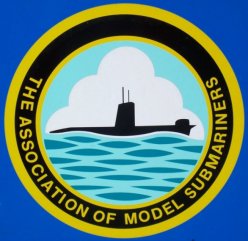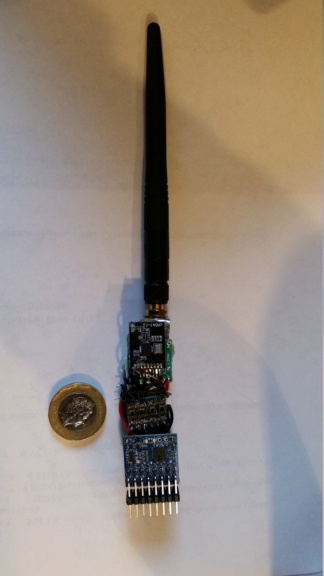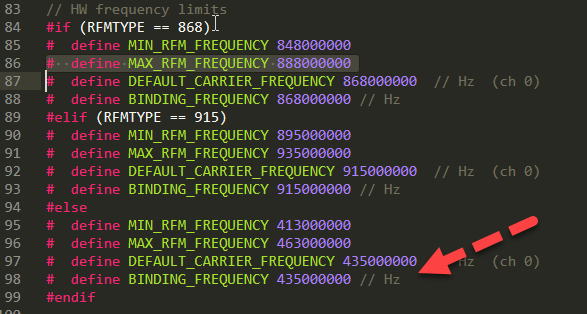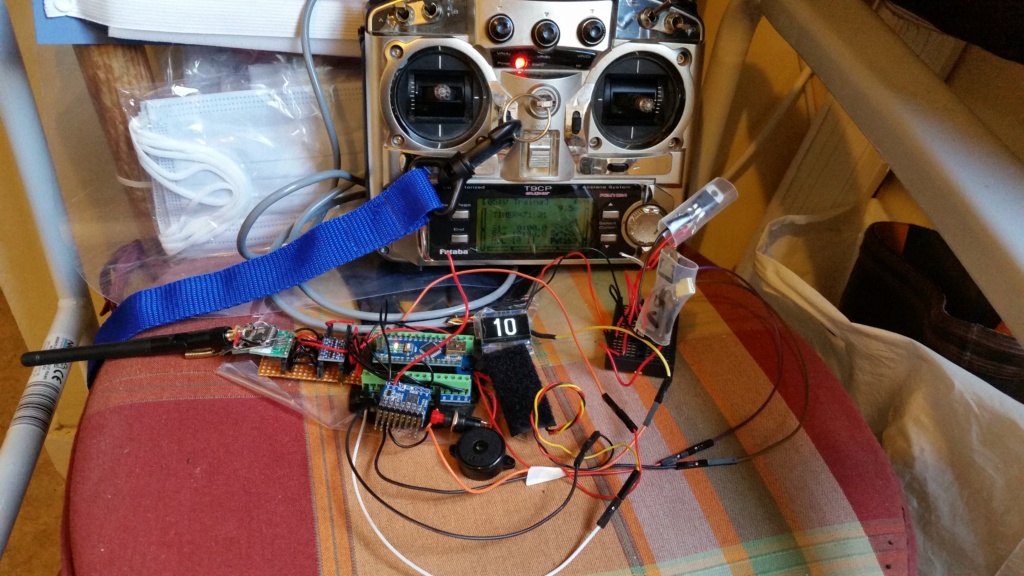Thanks for the very useful TX suggestions, Guys, (the RXs are working fine on the bench) which I have investigated as shown below:

(1) and (2) are TX breadboards using REAL Nanos (the Nano Every doesn't work in the Configurator) to eliminate the "clone wars" (yes, one of my Nano clones lost its configuration settings in eeprom overnight!). They both have voltage level convertors for all 5 pins. (Not just for 4 as in the Mark 2.)
So this is as you both suggested.
Number (1) worked well for several days but has since stopped working. (2) has never worked.
The problem is that they don't transmit, as monitored on another module acting as (a really useful) spectrum analyzer.) (I have confirmed that the TX module always transmits as long as it is getting a ppm stream. Another handy tip is don't tick the Bind Code box in the TX screen of the configurator. This keeps the same bind code for everything you do.)
Number (2) doesn't work even when all the chips are swapped over from (1) which suggests a wiring fault (I have checked everything) or that the physical layout is stopping it working.
Number (3) just works well all the time! It is a "Mark 2" receiver flashed with the TX software. The range isn't brilliant only about 60 metres but it only has the basic aerial.
It is all very puzzling and I am running out of theories why the TX is so much more of a problem than the RX.
The following are possible explanations:
- rf module faults, quality control?? Is running them at 458 Mhz a problem?? (I have some more on order.)
- the fact that the TX (not the RX) is the problem maybe suggests that power supply or power up could be the problem. The Si4330 datasheet on page 50 gives a rather frightening description of a "Smart Reset" triggered by all sorts of factors at switch on. I will try some on-board capacitors and separate 5v and 3.3 volt power supplies.
In summary though, it is not looking too promising for a DIY TX. The best advice at the moment is build a handful of Mark 2 RXs in the hope that one will be able to act as a TX ! The RX is looking OK.
David
PS (1) I am going to take a look at Tim's previous post about a peak into the future of openLRS. (It would be nice to move the technology into Lora etc but we need lower frequencies (Less than 500Mhz. Subs have such different needs to drones.) and someone has to do the software. openLRS is nicely developed and available at no cost.)
PS (2) In answer to your question, Jonathan, I am still using the pinout connections shown in my post here of 17 Oct 2020 - 9:55 called "New Chinese sourced module (Mark 2)" (HV, LV etc refer to the voltage level convertor module.)










» RC Drift Gyro for pitch control
» WW2 mini sub build
» sonar data link
» Robbe Seawolf V2
» ExpressLRS - 868/915 Mhz equipment
» Flight controllers as sub levelers
» 868/915 Mhz as a viable frequency for submarines.
» Microgyro pitch controller corrosion